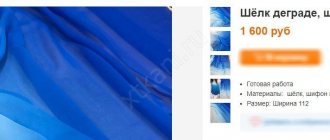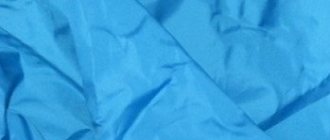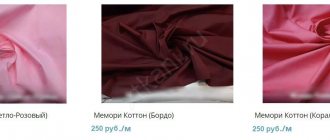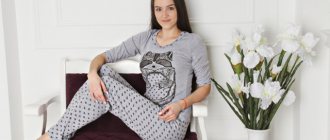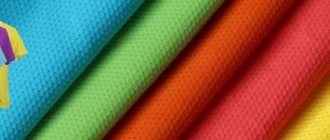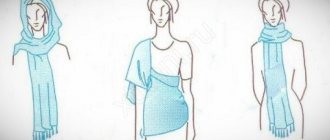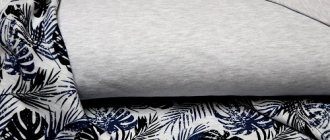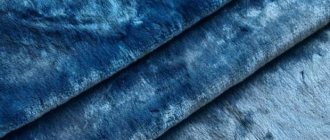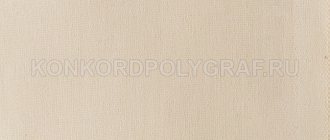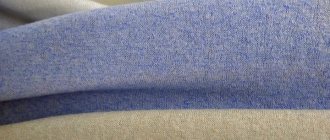It turns out that corn is not just a food and feed grain, but also a source of raw materials for creating surprisingly comfortable, durable and strong fabrics. Corn fabric is an elastic knitted fabric, soft, loose, with a characteristic checkered surface. Sweaters, T-shirts, underwear and dresses are made from this material. Let us dwell in more detail on the properties and characteristics of this material.
History of fabric
The material began to be produced in the last century in the USA. The technology is considered relatively new. Widely used in clothing production, but not universally.
In Russia, wardrobe items made from corn fabric are very rarely sewn, so the material is considered not in demand. The environmentally friendly product for sewing is widely used in America and Western Europe.
Manufacturers fell in love with ribbed material for its versatility and low cost. Experts predict an increase in popularity in the global market.
Corn making process
Corn fabric is made partly from corn starch, which is processed using a certain technology:
- Dextrose is extracted from corn starch, then it is processed into lactic acid, the water is squeezed out and corn fiber is obtained directly.
- After chemical treatment and dyeing, this fabric is obtained.
How to produce
Despite the fact that chemical processing is used in its creation, the corn material has a natural composition.
Production takes place in several stages:
- starch extraction;
- conversion of dextrose into lactic acid;
- dehydration;
- the polymer is used to produce threads;
- chemical treatment and dyeing.
Pique weaving is created using a system of weft threads. The result is a smooth back and a textured front with a diamond pattern.
Production technology
A group of durable and comfortable fabrics are obtained from corn.
Corn is a tall annual cereal plant. Despite its impressive size, its structure resembles grass. The straight stem can reach a diameter of up to 7 cm, and wide meter-long leaves are about 10 cm wide.
It is from this plant that starch is obtained, and then biological polymers (high molecular weight chemical compounds) are synthesized from it. That is, dextrose is obtained from starch, it is brought to the state of lactic acid. Then fibers are produced, from which they are made into threads, and then into fabric. For example, the famous synthetic fabric nylon is also made from polymers.
It turns out that corn fabric is created from natural raw materials, but it is processed chemically, like real synthetics. That's why corn is called an artificial fabric, like viscose, which is processed from cellulose. It is a mistake to think that this is the name of a specific material, such as velvet or guipure. Corn is a group of tissues that contain starch extracted from this plant. Pure corn fibers are practically never used to create fabric.
The weaving of corn fabric is called “pique” - this is a special type of knitted fabric. The fabric is formed by two systems of weft threads with ribs, sometimes with three-dimensional geometric patterns (honeycombs, squares, diamonds). One of the varieties of pique is waffle fabric. Thanks to the special weaving structure, the material does not wrinkle, it is very durable and tolerates machine washing well, but requires starching to maintain its original shape.
Sometimes French knitwear and lacoste are called corn, but these are different materials:
- French knitwear - woven fabric made exclusively from natural fibers;
- Lacoste - knitwear made of cotton, viscose, wool, silk, and also sometimes with the addition of corn (that is, this is not a Lacoste subspecies of corn, but corn is sometimes found in this fabric with a special loose weave).
Another popular type of fabric is Ingeo. The material consists of polyester, wool and corn fibers. The fabric retains heat perfectly and looks like wool.
Composition and characteristics
Corn knitwear is ideal for sewing clothes. The products are practical, comfortable and do not require special care. The fabric is pleasant to the touch, the outer side is ribbed with a pronounced structure, and the inner part is very soft and smooth.
Hypoallergenic material, washable on delicate cycle, resistant to external influences. It is not recommended to iron clothes made from corn, as it will melt when exposed to high temperatures.
Helpful information:
What kind of fabric is interlock foam?
What kind of fabric is brushed footer?
Does not wrinkle and fits the figure. It will be a replacement for natural fabrics that require special care.
pros
- Very soft to the touch material;
- Elastic, stretches well and will help visually model your figure;
- Keeps you warm;
- Quickly absorbs excess moisture and dries;
- Does not fade, the color remains saturated for a long time;
- Belongs to the category of “breathable” fabrics;
- Wear resistance, practicality and ease of care;
- The assortment is represented not only by fabrics, but also by yarn and threads;
- An excellent replacement for polyester and elastane;
For production, corn fabric is used, which is also called Ingeo. Among the famous designers, Giorgio Armani appreciated its advantages and often uses it in his collections.
Minuses
Corn web also has negative qualities, but they are much fewer than the advantages.
- If not properly cared for, it may lose its shape and become deformed;
- Any snag will cause noticeable puffs.
Areas of use
Corn fiber is currently used in sportswear, non-woven textiles, several knitwear, socks, outerwear that covers a part of the body and is worn in combination with other items such as skirts, blouses, jackets, trousers, etc.
Collections of airy and light sweaters from a big fan of this material, Giorgio Armani, have not left the catwalks for several seasons.
Lightweight fabrics are used to make underwear, tunics and comfortable T-shirts.
The wonderful ability of the fabric to quickly evaporate moisture and high elasticity is used in the manufacture of sportswear.
The softness and stretchability of the material are used in the production of bed linen, blankets and pillows in America and Europe.
The addition of polyester increases the elasticity of the fabric, and wool fibers - its heat-saving qualities. One of the best blended fabrics, consisting of polyester (60%), corn fibers (30%) and wool (10%) is called Ingeo. It is used to make elegant and casual ladies' dresses, warm jackets, cardigans and trousers.
Care Tips
The balance of strength and flexibility of knitted fabric is achieved through production technology. The products are easy to care for and no special knowledge is required. By following simple rules, you can preserve the original appearance and beneficial properties for a long time.
- How to wash .
It is recommended to wash products by hand. If the owner of an item wants to wash it in a washing machine, he must select the delicate cycle and pack the item in a special bag. Before washing, zippers and locks are fastened, and the item is turned inside out. It is forbidden to twist it, as the corn web may become deformed. - How to dry .
It is not recommended to hang clothes made from corn cloth. Dry in a horizontal position. Avoid exposure to direct sunlight. - Is it possible to iron ?
The description on the label will confirm that you should not iron things made from corn. At elevated temperatures, the fibers will melt. If creases cannot be removed, you can iron them through gauze or thin fabric. Temperature should be less than 100°.
Usage
Due to its excellent properties, this material is increasingly used every day, especially in Western Europe and the USA. Most likely, in the near future corn may occupy a significant part of the world market:
- Bed sheets . Thanks to its excellent hygienic properties, corn makes excellent bed linen, blankets and pillows are made from it, and more and more clothes made from this material are appearing on the shelves.
- Sportswear . This fabric has already been appreciated by sportswear manufacturers. Its elasticity, wear resistance, lightness and excellent breathability are perfect for tracksuits, T-shirts, underwear and other elements of sportswear.
- Sewing casual and dressy clothes . In addition, “corn” has proven itself well as a fabric for sewing dresses, suits, sweatshirts, sweaters, skirts, jackets, tunics and even hats. Famous designers and the world's leading clothing manufacturers have already fallen in love with “corn” for its lightness, comfort and original appearance.
For example, the famous designer Giorgio Armani is a fan of corn fabrics; in recent years, in every season, this couturier has been sure to include light and original products made from corn yarn in his collections.
It’s rare that a fashion show is complete without new items created from this material. Corn is especially widely represented at fashion shows with an environmental focus.
This material is most often used in summer clothing collections and this is not surprising: the unique “breathing” properties of corn, its ability to absorb water and resistance to fading in the sun could not go unnoticed. The unique properties of the material allow it to increasingly appear in winter and autumn clothing collections. In addition to corn, new modern materials include modal fabric, which you can read about here.
Another new material is tencel fabric.
Knitted fabric
A special type of fabric is knitted fabric. The method of producing knitwear is fundamentally different from the production of conventional fabrics. It is obtained by weaving one or more threads using the knitting method, creating loops. There are no perpendicular weaves of threads here, which gives the finished product good stretchability in different directions.
Photo gallery
Knitwear for children's things Knitwear for vests Knitwear for underwear Knitwear for bed linen Knitwear for handicrafts Knitwear for sportswear Knitwear for bathrobes Knitwear for hats2017-10-04
TagsKnitwear for children's things Knitwear for vests Knitwear for underwear Knitwear for bed linen Knitwear for handicrafts Knitwear for sportswear Knitwear for bathrobes Knitwear for hats
Back Rogozhka
Forward Jeans

